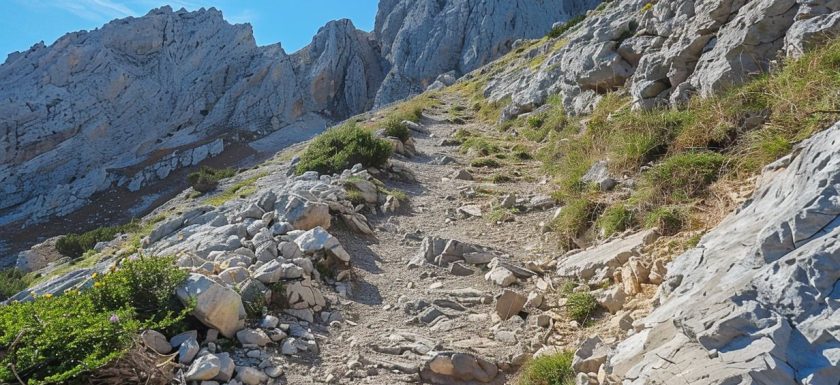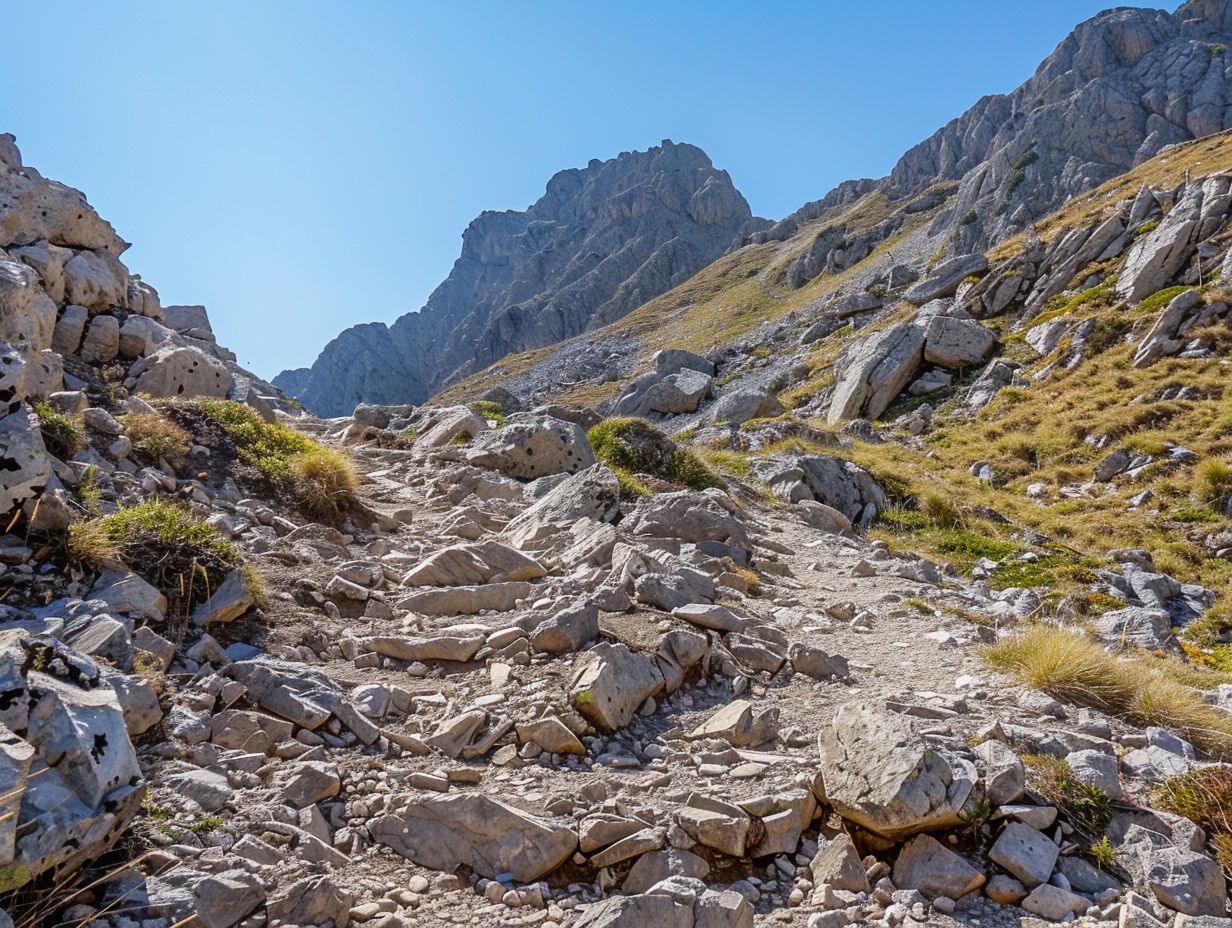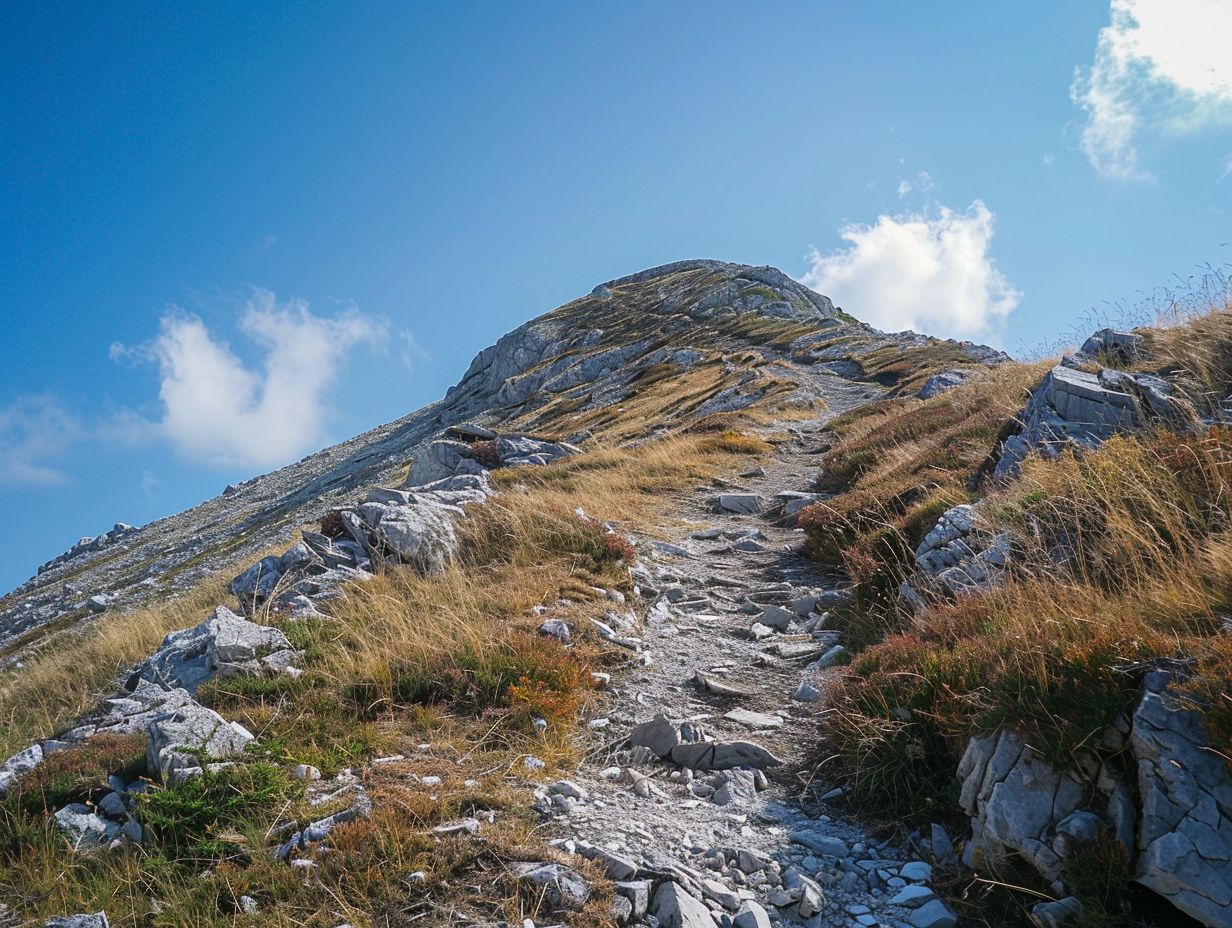
If you’re considering climbing Mount Kilimanjaro, you may have come across the Western Breach Route. But what exactly is this route and how does it compare to the other options?
In this guide, we will explore the Western Breach Route in detail, including its difficulty level, physical requirements, duration, and highlights. We will also discuss the best time to climb, safety measures, gear needed, costs involved, and ultimately help you decide if this challenging route is the right choice for your Kilimanjaro adventure.
Key Takeaways:

- The Western Breach Route is a challenging and less-traveled path to the summit of Mount Kilimanjaro.
- The physical requirements for this route include a high level of fitness and previous hiking experience.
- The Western Breach Route offers stunning scenic views and unique cultural experiences, but climbers must adhere to strict safety measures and be properly equipped for the climb.
What is the Western Breach Route?
The Western Breach Route on Kilimanjaro is a challenging path that attracts experienced climbers seeking a more technical ascent. It is known for its unique rock formations and stunning views along the way.
Originally used by local Chagga tribes as a trading route, the Western Breach Route holds historical significance in the region. Its appeal lies not just in the physical challenge it presents but also in the cultural and natural history intertwined with the journey.
The dramatic landscapes comprised of towering cliffs and ancient lava flows offer a rugged yet captivating environment for climbers. As you ascend, the terrain transitions from rocky scree to exposed ridges, providing a varied and exhilarating climbing experience.
How Does the Western Breach Route Compare to Other Kilimanjaro Routes?
Compared to other Kilimanjaro routes, the Western Breach Route stands out for its technical climbing aspects and breathtaking scenery, offering a unique challenge to those seeking a more adventurous trek.
While the Western Breach Route is known for its rugged terrain and steep sections that require some rock scrambling skills, other popular Kilimanjaro routes like the Marangu and Machame are more gradual and less technically demanding.
The landscape along the Western Breach Route is characterized by dramatic cliffs, glaciers, and the iconic Lava Tower, providing trekkers with awe-inspiring vistas that are unrivaled on other trails.
The overall experience on the Western Breach Route is often considered more remote and secluded, attracting climbers who prefer a quieter and less crowded journey compared to the busier Machame and Lemosho routes.
What is the Difficulty Level of the Western Breach Route?
The Western Breach Route on Kilimanjaro is considered one of the most challenging routes due to its steep ascent, technical climbing sections, and potential rockfall hazards, making it suitable only for experienced climbers seeking a high level of adventure.
Ascending via the Western Breach Route demands a blend of physical fitness, mental endurance, and technical skills. Climbers must navigate through a series of gullies and cliffs, often requiring the use of ropes and harnesses to traverse the exposed sections safely.
The route’s unpredictable weather conditions add another layer of complexity, with sudden changes in temperature and visibility posing additional risks. Being well-versed in glacier travel and rock climbing techniques is essential to tackle the challenging terrain and steep slopes efficiently.
What are the Physical Requirements for the Western Breach Route?
The Western Breach Route demands exceptional physical endurance and acclimatization as climbers navigate through varying altitudes and challenging terrain. Adequate rest and acclimatization days are essential for a successful ascent.
The physical requirements for conquering the Western Breach Route involve a combination of cardiovascular fitness, strength, and mental resilience. Climbers must be prepared for long hours of trekking with heavy gear at high elevations, where oxygen levels are lower and each step requires more effort.
Proper acclimatization is crucial to prevent altitude sickness, so it’s recommended to gradually ascend with sufficient breaks to adapt to the thin air. Stamina plays a key role as the route presents steep inclines and rocky patches. Maintaining hydration levels is vital for overall performance and well-being.
What is the Duration of the Western Breach Route?

The Western Breach Route typically takes around X days to complete, with the final push towards the summit usually starting on the challenging summit night when climbers aim for Uhuru Peak.
During the ascent on this route, climbers pass through key landmarks like Lava Tower Camp, where they acclimatize to the altitude, and the Arrow Glacier Camp, known for its stunning views. Summit night entails a demanding climb in the darkness, navigating steep inclines and loose scree, before reaching Gilman’s Point at dawn.
From there, the final stretch to Uhuru Peak involves traversing the crater rim, culminating in a breathtaking sunrise over the glaciers of Mount Kilimanjaro. A true test of endurance and determination, the Western Breach Route offers an unforgettable adventure for those seeking a more challenging ascent.
What is the Best Time to Climb the Western Breach Route?
The best time to climb the Western Breach Route is during the dry seasons of X and Y when the weather conditions are most stable, reducing the risks associated with rock falls and inclement weather.
In these dry seasons, typically occurring between April to October and December to February, climbers may experience clear skies and minimal precipitation, providing optimal visibility and safer conditions for ascent.
Choosing to tackle the route during these periods also ensures that the likelihood of encountering hazardous snowstorms or avalanches is significantly reduced, enhancing overall safety and success rates.
What are the Weather Conditions on the Western Breach Route?
The weather conditions on the Western Breach Route can vary significantly due to the altitude changes along the climb, with temperatures ranging from X to Y degrees Celsius.
At lower altitudes, climbers may encounter warm, sunny conditions. As they ascend higher, temperatures can plummet rapidly, bringing freezing winds and even snowfall. The drastic shifts in weather can be challenging, impacting visibility and posing risks of hypothermia or frostbite.
- Altitude effects intensify these conditions, with reduced oxygen levels and increased UV exposure heightening the challenges. Proper acclimatization and hydration become crucial to combat altitude sickness and energy depletion.
- Climbers must pack adequate layers, including insulated jackets, thermal undergarments, and waterproof gear to tackle the diverse weather scenarios they may face.
What are the Highlights of the Western Breach Route?
The Western Breach Route offers breathtaking highlights such as stunning sunrise views from the summit, close encounters with Kilimanjaro’s glaciers, and the thrill of overcoming challenging sections that add an element of danger to the trek.
As trekkers ascend along this route, they are treated to a spectacle of changing landscapes, from rocky outcrops to the icy slopes that morph into expansive panoramic views. The embrace of nature is palpable as one navigates through snowfields and boulders, with the looming presence of the iconic Uhuru Peak urging them onward.
One of the most memorable moments is reaching the Crater Camp, nestled within the volcanic rim, offering a unique camping experience amidst the grandeur of Kilimanjaro’s geological wonders. From here, the crimson hues of dawn painting the sky are a sight to behold, casting a mystical glow over the rugged terrain.
Encounters with the rugged terrain demand both physical endurance and mental resilience, making each step a testament to one’s determination and perseverance. The sublime silence of the great outdoors envelops trekkers, punctuated only by the sound of crampons crunching on ice and the occasional gust of wind.
What are the Scenic Views on the Western Breach Route?
The Western Breach Route offers panoramic views of the Kilimanjaro National Park, lush landscapes of the Shira Plateau, and glimpses of the surrounding mountains, providing trekkers with a visual feast throughout the journey.
As trekkers ascend the challenging terrain of the Western Breach Route, they are rewarded with unparalleled vistas that showcase the diverse ecosystems of the region. The route meanders through ancient lava formations, offering glimpses of towering cliffs and expansive valleys below, creating a sense of awe-inspiring scale and beauty.
Along the way, adventurers can admire the unique flora and fauna that thrive in this high-altitude environment, including endemic plant species and occasional wildlife sightings. The interplay of light and shadow on the rugged terrain enhances the dramatic scenery, making each step a breath-taking experience.
What are the Cultural Experiences on the Western Breach Route?

While primarily a nature-focused trek, the Western Breach Route also provides glimpses of local culture and traditions, with opportunities to learn about the mountain gods and historical significance associated with Kilimanjaro.
Interacting with the local Chagga communities along the route offers a unique insight into their rich cultural heritage. Many believe in the protective powers of the mountain gods, bestowing blessings for safe passage.
As trekkers ascend the challenging terrain, they may witness rituals and ceremonies performed to honor these revered deities. The intricate traditions and stories shared by locals add depth to the trekking experience, creating a more profound connection to the land and its people.
What are the Safety Measures on the Western Breach Route?
Safety is paramount on the Western Breach Route, with expeditions employing experienced guides, porters for logistical support, and adhering to strict safety protocols to mitigate risks associated with high altitudes and challenging terrain.
Guides play a crucial role in ensuring climbers are equipped with necessary skills and knowledge to navigate the route successfully. They provide guidance on acclimatization, altitude sickness prevention, and emergency procedures. Porters, on the other hand, lighten the load for climbers by carrying equipment and supplies, allowing them to focus on the climb itself.
Safety protocols include regular health check-ups, weather monitoring, emergency communication systems, and contingency plans for unforeseen circumstances. Climbers are urged to follow instructions, stay hydrated, pace themselves, and be prepared for changing conditions.”
What are the Essential Gear and Equipment for the Western Breach Route?
Proper gear and equipment are essential for the Western Breach Route, including sturdy climbing boots, harnesses, helmets, and specialized gear to navigate rocky terrain and ensure climbers’ safety during the ascent.
Additionally, ice axes are crucial tools that provide stability and traction on icy sections of the trail, helping climbers maintain balance and control while ascending the steep slopes.
Carrying a headlamp is imperative for early morning starts or late finishes, ensuring visibility in low-light conditions and aiding navigation through challenging terrain.
Furthermore, climbing ropes are critical for belaying and rappelling, offering support during vertical ascents and descents, particularly on exposed sections where a slip could be dangerous.
What is the Cost of Climbing the Western Breach Route?
The cost of climbing the Western Breach Route varies depending on the tour operator, package inclusions, and level of luxury chosen, with expeditions catering to different budgets and preferences for a memorable Kilimanjaro experience.
When considering the cost factor for the Western Breach Route climb, one must evaluate the various elements that contribute to the overall price tag. Tour operators play a significant role in determining the cost, with some offering all-inclusive packages while others provide more basic services.
Price variations can also stem from the duration of the expedition, accommodation options, guide-to-climber ratios, and additional amenities included in the package.
For those seeking a more extravagant ascent, there are luxury options available that elevate the experience with premium services such as private tent accommodations, gourmet meals, and personalized attention from experienced guides. These luxurious packages often come at a higher price point but provide unparalleled comfort and convenience amidst the challenging terrain of Kilimanjaro.
Conclusion: Is the Western Breach Route Right for You?
The decision to tackle the Western Breach Route on Kilimanjaro should be carefully considered based on your skill level, risk tolerance, and desire for a challenging summit experience amidst the mountain’s unique terrain.
The Western Breach Route is known for its vertically challenging ascent that involves scrambling over rocks and navigating through loose scree, which can be physically demanding and mentally taxing, requiring climbers to be in good physical condition and have previous high-altitude trekking experience.
Climbers seeking a more direct and technical route to the summit of Kilimanjaro may find the Western Breach Route appealing, as it offers a thrilling alternative to the more commonly used routes like the Marangu or Machame.
It’s important to note that the Western Breach Route is considered one of the more dangerous paths up Kilimanjaro due to the risk of rockfall and potential altitude-related challenges, making careful acclimatization and adherence to safety protocols crucial for a successful summit bid.
Frequently Asked Questions

What is the Western Breach Route on Kilimanjaro?
The Western Breach Route is a challenging and less-travelled hiking route on Mount Kilimanjaro, the highest peak in Africa. It is known for its steep and rocky terrain, and offers a unique and exhilarating experience for climbers.
How difficult is the Western Breach Route on Kilimanjaro?
The Western Breach Route is considered one of the most difficult routes to summit Kilimanjaro. It requires a high level of physical fitness and previous hiking experience. The steep and rocky terrain can also present challenges, making it suitable for experienced climbers only.
How long does it take to complete the Western Breach Route on Kilimanjaro?
The Western Breach Route typically takes 7-9 days to complete, including acclimatization days. This is longer than other popular routes, such as the Machame or Marangu routes, due to the challenging terrain and higher elevation.
Is the Western Breach Route on Kilimanjaro safe?
While the Western Breach Route is considered a more challenging route, it is still a safe option for climbers. As with any outdoor activity, it is important to follow safety precautions and listen to your guide’s instructions.
What is the best time of year to climb the Western Breach Route on Kilimanjaro?
The best time to climb the Western Breach Route on Kilimanjaro is during the dry season, from late June to October. This is when the weather is more predictable and the chances of clear views from the summit are higher.
Do I need a guide to climb the Western Breach Route on Kilimanjaro?
Yes, it is mandatory to have a guide when climbing the Western Breach Route on Kilimanjaro. They will not only ensure your safety, but also provide valuable knowledge and support throughout the trek.